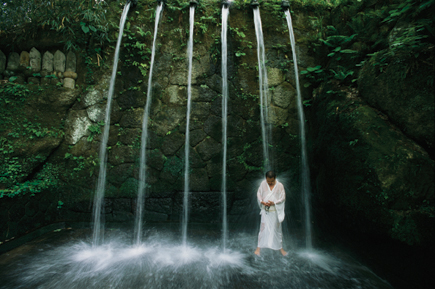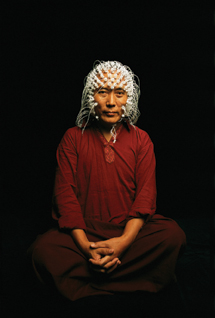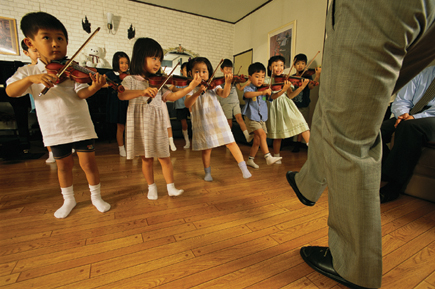Picturing Concepts; The Photography Of Cary Wolinsky
How do you translate an idea into an image? Or convert words into a photograph?
How can a picture create a sense of fear and is this fear something we are born
with? Perfect pitch... How might you define this phenomenon with your camera?
Or hypergraphia, the compulsive need to write?
These were among the puzzles that confronted Cary Wolinsky for his story on
the human mind in the March 2005 issue of National Geographic.
Waterfall Meditation |
|
 |
|
|
Wolinsky, a veteran of 35 years at National Geographic, was accustomed to
being given a story and trusted to come back with his own idea of what it should
look like. He knew that this assignment required a unique kind of vision and
that he was moving further into the field of illustration. Making sure his editors
were at peace with ideas that were different and more abstract, Wolinsky was
all the while learning how to have fun with this kind of concept.
A year of research went into the project and while making a guest appearance
at The Center for Digital Imaging Arts at Boston University in Waltham, Massachusetts,
Wolinsky shared his journey of discovery with the New England chapter of the
ASMP (American Society of Media Photographers). The group of pros formed a rapt
audience, asking many questions during and after the lecture.
Monk With Head Sensors |
|
 |
|
|
One of the most intriguing stories dealt with meditation and the neuropsychology
of the spiritual experience. "The cover shot should have been a simple
studio picture with a black background," Wolinsky says, "but we
had wanted this image of one of the Dalai Lama's disciples. It seems that
the Dalai Lama had heard of the research being conducted at the University of
Wisconsin-Madison dealing with the question of what really goes on in the brain
with deep meditation. He called the researchers in Madison and said, `Hello,
this is the Dalai Lama. I have some `Olympic' meditators here who
have more than 10,000 hours of meditation under their caps and I will loan them
to you for the study.'"
The question was what is going on in their brain when they were in a state of
deep meditation. The answer was, not much. In fact, their brains were so quiet
they were off the existing scale that showed brain activity.
Wolinsky was granted one hour to photograph and hurriedly booked a flight to Madison. With one flight canceled and time delays he arrived in Madison at 6am and set up a black background and lights. "Since we had to be out of the designated space in such short time I had the presence of mind to shoot my subject every which way--front, back, and sideways. There was not much going on. I had only a light, a meditating lama, hands folded and dressed in a red Tibetan costume with electrodes covering his head. That was the shot and National Geographic used it on the cover."
Perfect Pitch And Suzuki Method |
|
 |
|
|
Wolinsky started getting involved in illustration some years ago when National Geographic asked him to do a story on writing. A photographer doing a story on writing? It turned out to be a challenging assignment and he became interested in writing forms, in particular Egyptian hieroglyphics that were decoded. A little bird, a little foot--they were picture stories. But Wolinsky sensed that those symbols were also phonetic. "When you go into an Egyptian tomb and see all the little forms on the wall, you are looking at a combination of writing and artistic expression," he says, "so there is also a visual symbolic meaning as well as a phonetic one.

















































